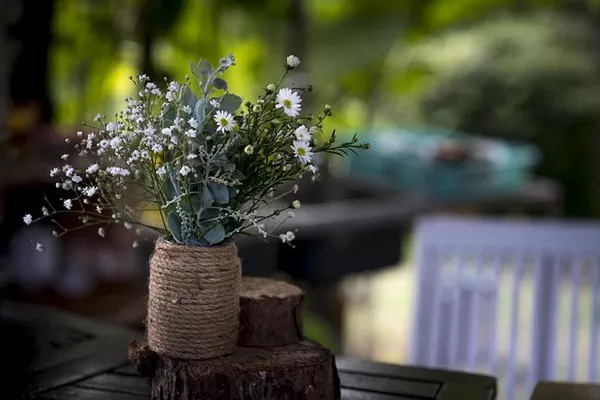Flowers are nature’s delicate masterpieces, captivating us with their vibrant colors and enchanting fragrances. Whether received as a gift or grown in our gardens, preserving the beauty of flowers can be a cherished way to cherish special moments and memories. Drying out flowers is an age-old technique that allows us to retain their charm and use them in various decorative projects. In this article, we will explore the art of drying flowers and discover effective methods to ensure successful preservation.
Selecting the Right Flowers
Before embarking on the drying process, it is crucial to choose the right flowers. Not all flowers dry well, and some varieties retain their color and shape better than others. Flowers that are suitable for drying include roses, lavender, daisies, hydrangeas, statice, and baby’s breath, among others. It is advisable to pick flowers that are in their peak bloom stage and have not yet begun to wilt.
Harvesting Flowers at the Optimal Time
The timing of flower harvesting is critical for successful drying. It is best to pick flowers early in the morning when they are well-hydrated, as this ensures that they will retain their vibrant colors and natural beauty throughout the drying process. Avoid picking flowers during or immediately after rainfall, as excess moisture can hinder the drying process and lead to mold growth.
Choosing the Drying Method
There are several popular methods for drying flowers, each with its unique advantages and suitability for different flower types. The main techniques for drying flowers include air drying, silica gel drying, pressing, and using a microwave or oven.
1. Air Drying
Air drying is one of the simplest and most traditional methods of drying flowers. To air dry flowers, follow these steps:
Bundle a small bunch of flowers together, securing them with a rubber band or string.
Hang the flower bundles upside down in a warm, dark, and well-ventilated area.
Ensure that the flowers are not overcrowded to prevent them from touching or overlapping.
Leave the flowers to dry for several weeks, or until they feel crisp and papery to the touch.
Air drying is particularly suitable for flowers with sturdy stems and petals that retain their shape well during the drying process.
2. Silica Gel Drying
Silica gel is a desiccant that effectively absorbs moisture and is widely used for drying flowers quickly and preserving their colors. To dry flowers using silica gel, follow these steps:
Select a container with an airtight lid that is large enough to accommodate the flowers without crowding.
Pour a layer of silica gel at the bottom of the container.
Trim the flower stems and place the flowers upright in the container, ensuring they are not touching.
Carefully sprinkle more silica gel around and over the flowers until they are fully covered.
Seal the container with the lid and leave it undisturbed for several days, depending on the flower type and size.
Silica gel is especially useful for drying delicate and intricate flowers that may lose their shape during air drying.
3. Pressing
Pressing flowers is a classic method that involves flattening flowers between sheets of absorbent paper to preserve their form. To press flowers, follow these steps:
Place the flowers between two sheets of absorbent paper or parchment paper.
Position the paper with the flowers inside a heavy book, ensuring that the flowers do not overlap.
Add additional weight on top of the book, such as other books or a heavy object.
Leave the flowers pressed for several weeks, replacing the absorbent paper every few days to prevent mold growth.
Pressing is ideal for preserving the delicate beauty of flowers, and the flattened flowers can be used for various craft projects and artwork.
4. Microwave or Oven Drying
Using a microwave or oven for drying flowers is a quicker method compared to air drying, although it may not retain the colors as well as other methods. To dry flowers using a microwave or oven, follow these steps:
Place the flowers in a single layer on a microwave-safe plate or a baking sheet for the oven.
Microwave the flowers at low power or bake them in the oven at a low temperature, checking them frequently to prevent burning.
The drying time will vary depending on the flower type, but it is essential to avoid overheating to preserve the flowers’ colors and shape.
Sealing and Preserving Dried Flowers
Once the flowers have completed the drying process, it is crucial to preserve them to maintain their beauty and prevent damage. Sealing dried flowers with a clear acrylic spray or hairspray helps protect them from dust, humidity, and fading.
Arrange the dried flowers in a shadow box, frame, or glass container to showcase their beauty and protect them from external elements. Keep the dried flowers away from direct sunlight and high humidity to ensure their longevity.
Conclusion
Drying flowers is a delightful and rewarding way to preserve nature’s ephemeral beauty, allowing us to cherish special moments and memories for years to come. The art of drying flowers offers a range of techniques, each with its unique advantages, suitable for different flower types and intended uses.
Whether you choose air drying, silica gel drying, pressing, or microwave/oven drying, the key to successful flower preservation lies in selecting the right flowers, timing the harvest, and using proper preservation methods. With care and patience, you can transform delicate blooms into timeless treasures that bring joy and elegance to your home and creative projects.


